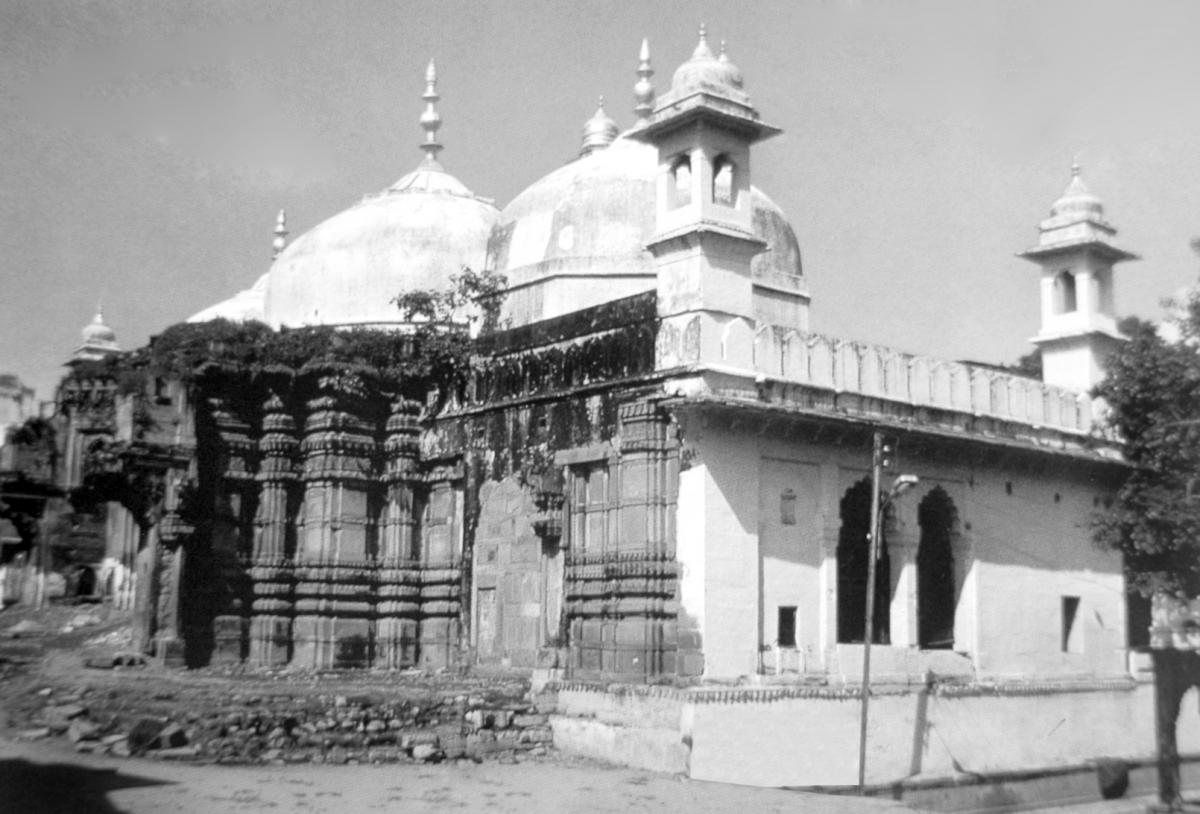Anoop Shramik and several citizens have been watching the developments around Gyanvapi with apprehension. Since 2014, when plans for a ‘Bhavya Mandir’ (Grand Temple) gained ground, the government of Uttar Pradesh has been stealthily clearing out the small lanes, historical temples and buildings leading up to the Manikarnika Ghat, leaving the historic Gyanvapi Masjid thoroughly exposed.

The buildings around the entrance of the temple have been ‘acquired’ by heavyweight corporate based out of Mumbai who have –it is reported –been ‘facilitating the compensation and take over. Many old lands around the Shiv Viswanath temple have been acquitted by two or three maths affiliated to a political dispensation. The plan, openly speculated upon by the local media is to demolish all the ‘gallis’ (lanes) and ancient temples around this area and ‘clean up the surroundings to a large pathway (where cars and helicopters can drop) for a ‘darshan’ of the temple. This will leave the historic Guan Vapi masjid completely exposed.
Varanasi is the Loksabha constituency of prime minister Narendra Modi, and activists in the region fear and sense that the Uttar Pradesh government is planning to repeat the 1992 Babri Masjid episode by expanding the compound of ancient Vishwanath Temple of Varanasi. Activist Anoop Shramik is one of those who has been tracking the area, on foot with his camera.
The ancient Vishwanath temple — which has been demolished and rebuilt many times — was last demolished by Aurangzeb in 1669 CE, who built Gyan Vapi mosque at the ruins of the temple. After several failed attempts to rebuild the temple by demolishing the newly built mosque, it was Ahilyabai Holkar who constructed a new temple adjacent to the mosque in 1780.
Since the demolition of the Babri Masjid, the mosque and the temple both have landed in conflict at several times in the History. Chief Minister Yogi Adityanath proposed an expansion of the Temple corridor and revealed his plan to connect the temple directly with the Ganga river, which flows about half a kilometre from the Temple. The plan, which was originally introduced in 2009 by the then state government but was later withdrawn, demands the acquisition and demolition of 167 houses at a length of 450-metres in order to connect the temple and the Ganga. The plan, which has been facing numerous protests since its inaction, almost puts Gyanvapi Mosque devoid of any residential support, thus “more vulnerable to threats and nationalist politics,” says Ramesh Kumar , a 45-year-jewellery cosmetics seller near the temple.
Sabrangindia has done a close scrutiny of the area and found that cash compensation has been paid off to several shop keepers, small temple care takers and businessmen. One person, told Sabrangindia, “A compound of about half a kilometre has suddenly been planned around a temple in conflict with a mosque, it is easy to figure out what you are planning to do.” Maybe a similar demolition may not take place “identical to 1992”, but this is apparently going to put the mosque and the devotees in danger. Every day, Varanasi’s newspapers have stories about the proposed plans with two conflicting stories placed side by side. The district administration has been saying for long that no houses and homes would be demolished without consent, but alongside the same, half a dozen houses have already been demolished and rest have been marked with red paint for further action.

“I see a big compound where hundreds of Karsevaks could fill in, and that is not the projected purpose of the Temple,” one resident told Shramik. The eagerness of UP government can be understood with the fact that Yogi Adityanath himself has been monitoring the project, and he conducts a meeting with officials during his every visit to Varanasi. In fact, such has been the eagerness of Yogi Adityanath in this issue that a veteran journalist even threatened to end his own life if the demolition went ahead.
The climate is rife with othering and hatred in the prime minister’s constituency. “The pro-Hindutva sentiment is strong in Varanasi, and we think that government is taking advantage of the same. But even then many people are not able to understand the situation… they are just trying to save the heritage and their houses,” said another 76-year-old resident of the Bansfatak area, where the Temple gate is situated.
However, protests by the residents is gathering pace in city and various political parties are pouring in to extend their support to the protestors. Criticised for little progress, development and even heightening social disharmony, it is likely that the Modi-Yogi combine may yet use the ‘mandir’ card this time with the Shiv Vishwanath temple in Varanasi given that the Ayodhya matter is locked in the Supreme Court in dispute.
One of the barterers of the Wakf Board Waseem Rizvi, the Chairman at UP Shia Waqf Board, asked the Sunni Waqf Board and concerned authorities to “happily give up” the mosques which were built by demolishing temples, not to the surprise, Gyanvapi mosque was counted in his list.
